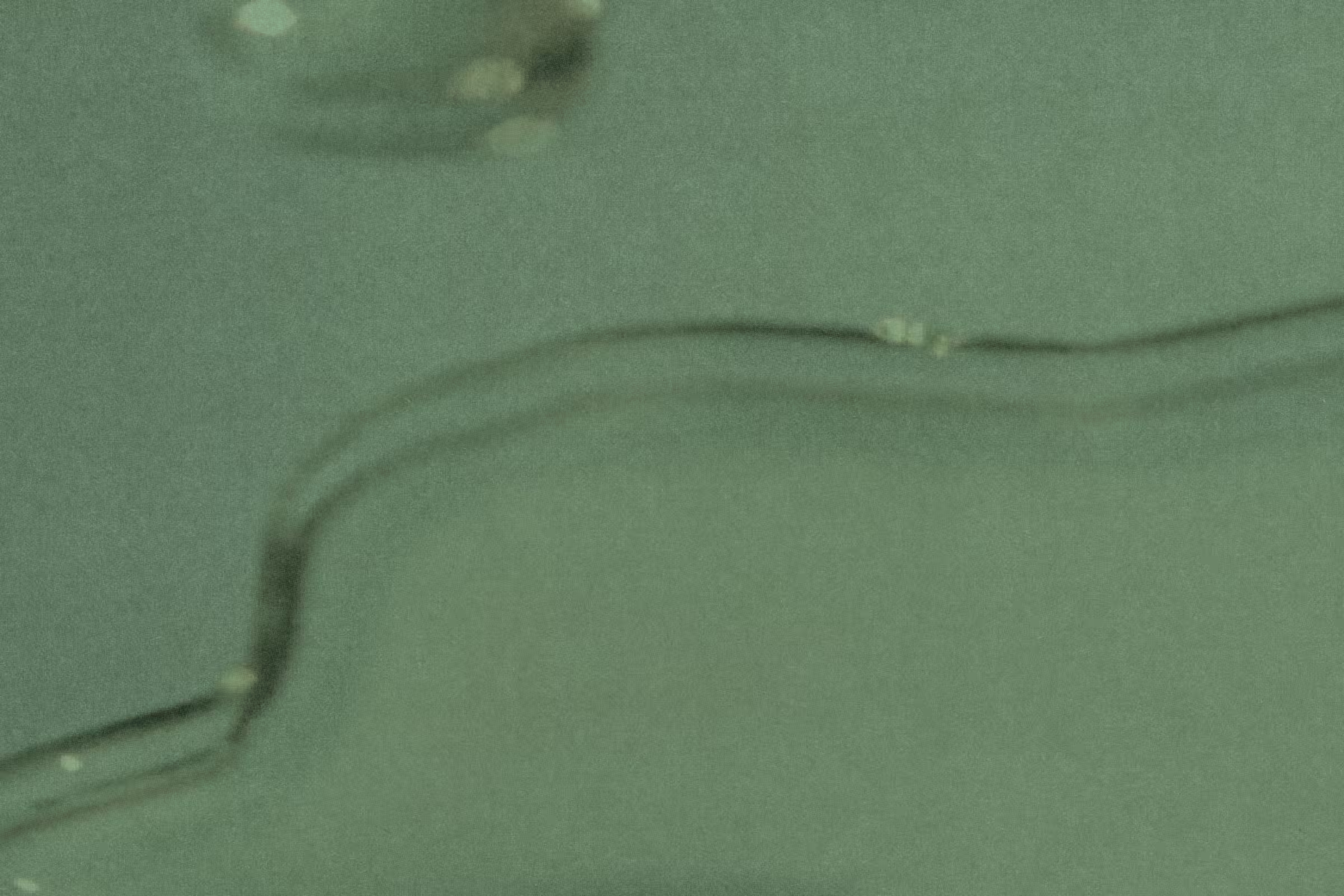

Vaginal Discharge That May Indicate an STI
Abnormal discharge may be the only sign of an STI like chlamydia or trichomoniasis. Learn what to look for and how Evvy’s vaginal health test can help you uncover the cause.
Words by Olivia Cassano
Scientifically edited by Dr. Krystal Thomas-White, PhD
Medically reviewed by Dr. Kate Stewart, MD
Vaginal discharge is the fluid produced from the cervix and vagina that helps to get rid of old cells and keep the vagina clean. It's a perfectly normal and healthy process and can also be an essential indicator of your overall sexual health. The color, consistency, and odor of your discharge can be a sign of an underlying problem, like a sexually transmitted infection (STI).
Knowing what healthy discharge looks like and changes to look out for can make it easier to spot when something isn't quite right, and when you should do an STI test. Since healthy discharge can look different from person to person, and factors like your cycle, birth control, and even sex can change the appearance of your discharge, you might be wondering, “What does vaginal discharge look like when you have an STI?”
Read on to find out how different sexually transmitted infections can affect your vaginal discharge and how to spot a potential red flag.
What vaginal discharge is normal?
We should start by saying that “normal” vaginal discharge can look different from person to person. Healthy discharge can range from clear and stretchy to white or pale yellow and pasty. Some people produce lots of discharge; some produce less. Some find that their discharge might have a mild smell (completely fine), while others might have discharge that pretty much doesn’t smell like anything. The key is knowing what is normal for you.
It’s also worth noting that the look and quantity of your discharge can change with your menstrual cycle. Discharge is mostly made up of cervical mucus, which is dependent on estrogen levels. As estrogen spikes and dips throughout the month, you might notice changes in your discharge. This is all completely normal.
Around the beginning or end of your period, you might even notice that your discharge is pinkish or brown because of the presence of blood. Meanwhile, around ovulation (about halfway through your cycle), discharge can look like raw egg whites — clear and stretchy. Tracking your discharge and getting real up close and personal with it can help you get to know what your “normal” looks like.
What does STD discharge look like?
One of the most common signs of a sexually transmitted disease (STD) is a drastic change in the color, consistency, or smell of your vaginal discharge. Although most sexually transmitted diseases are asymptomatic (which means you might not know you have one without getting tested), abnormal vaginal discharge is often a telltale sign of a sexually transmitted infection. STD discharge can sometimes look cloudy, yellow, or green and might even seem frothy or watery with a not-so-pleasant smell.
What STI causes discharge?
Three common sexually transmitted infections — trichomoniasis, chlamydia, and gonorrhea — can cause significant changes in vaginal discharge.
Trichomoniasis
Trichomoniasis, or "trich" for short, is a very common sexually transmitted bacterial infection. Most people with trich don't experience any symptoms, but when they do, a change in their vaginal discharge is right up there. Trichomoniasis discharge can:
- Be yellow, green, or gray
- Have a frothy consistency
- Have a foul or fishy odor
- Increase in quantity.
Chlamydia
Chlamydia is the most common sexually transmitted infection in the U.S., and about one in 20 sexually active women aged between 14 to 24 is diagnosed with chlamydia. Although some people may not experience any symptoms, abnormal discharge is one of the common indicators of chlamydia. Discharge caused by chlamydia can:
- Be yellow or white
- Look cloudy or milky
- Have a strong or foul smell
- Be pink, brown, or red in between periods or after having sex (caused by vaginal bleeding)
- Increase in quantity.
Gonorrhea
Gonorrhea is another pretty common STI. It affects over 1.5 million people every year, with more than half of those cases occurring in young folks aged 15-24. Much like with chlamydia and trichomoniasis, one of the symptoms is abnormal vaginal discharge. Gonorrhea discharge can:
- Be yellow or green
- Look cloudy or milky
- Have a thin or watery consistency
- Increase in quantity.

Recurrent symptoms? Get Evvy's at-home vaginal microbiome test, designed by leading OB-GYNs.
Can STD tests detect infections if discharge is the only symptom?
Yes, STD tests can detect infections even if discharge is the only symptom. Abnormal vaginal discharge is one of the most common signs of an STD like chlamydia, gonorrhea, and trichomoniasis — all of which can be present with or without other symptoms. These infections can cause discharge that's unusual in color, consistency, or odor, and testing is the only way to determine what’s going on.
However, it’s also worth knowing that not all causes of discharge are related to STIs. Conditions like bacterial vaginosis (BV) or yeast infections can cause similar symptoms, including odor, itching, or changes in discharge, but they won’t show up on a standard STI test.
Unlike traditional STI testing, Evvy’s Vaginal Health Test analyzes the full spectrum of bacteria and fungi living in your vaginal microbiome. This can help detect microbial imbalances that may be causing symptoms, whether or not they’re related to an STI. So, if your STI tests come back negative but you’re still experiencing abnormal discharge, Evvy’s vaginal microbiome test can provide deeper insight and help guide you toward the right treatment or next steps.
Other STI signs and symptoms
Unusual discharge isn’t the only sign of an STI. Other symptoms include:
- Pelvic or abdominal pain
- A burning or stinging sensation
- Vaginal itching
- Painful urination
- Needing to pee more frequently
- Spotting or bleeding between periods or after sex
- Pain during sex
- Painful sores in the genital area
- Swollen lymph nodes.
Remember that STIs are notorious for flying under the radar because the symptoms aren't always obvious, so there’s no accurate way of diagnosing an STI just by looking at whether or not you have symptoms. And many STIs don't affect your discharge, including genital herpes, genital warts, hepatitis B, and HIV infection.
Getting screened for STIs is the only real way to detect (and treat) an infection, even if you don't have any noticeable symptoms. The Centers for Disease Control and Prevention (CDC) recommends that sexually active adults get an STI test at least once a year (if they're in an exclusive relationship) or every three months if they have multiple sex partners.
We know that taking an STI test can feel like a chore (and a nerve-wracking one at that), but routine screening is the most effective way of reducing the spread of sexually transmitted diseases. Most STIs and STDs are entirely treatable and highly preventable. Still, if left untreated, they can cause long-term complications like pelvic inflammatory disease (PID), infertility, and an increased risk for cervical cancer.
Other infections that can affect your discharge
If your STD test is negative, but you still have discharge, there could be several other culprits. Other infections that aren’t sexually transmitted can also affect your vaginal discharge, including:
- Yeast infections can cause a clumpy, white discharge that looks like cottage cheese (and is generally odorless). It’s usually associated with intense itching.
- Bacterial vaginosis is associated with a watery, gray discharge with a fishy smell.
- Aerobic vaginitis (AV) causes sticky, green, or yellow discharge with a “rotten” or unpleasant odor.
- Cytolytic vaginosis (CV) often causes increased vaginal, white vaginal discharge that can be either watery or clumpy (similar to yeast infection discharge).
Although an STI might not cause it, any drastic shift in the way your vaginal discharge looks or smells deserves attention. If you’ve noticed a change in your discharge, Evvy’s comprehensive vaginal microbiome test can help you make sense of what the culprit is. Eligible users will also be able to order a personalized prescription treatment program developed by a provider.
FAQs
What does chlamydia discharge look like?
Chlamydia discharge is usually white or yellow and has a strong, unpleasant smell. That said, chlamydia has a nasty habit of being asymptomatic (meaning you might not have any symptoms), so looking at your discharge isn’t a good way to know if you have chlamydia. Other infections can also cause discharge similar to that of chlamydia. STI testing is the only way to know for sure whether or not you have an STI.
What color is an STI discharge?
It depends on the STI, but abnormal discharge due to an STI can range from white to yellow, green, or even gray.
What are 4 symptoms of STIs?
Most sexually transmitted infections are asymptomatic. When they do show symptoms, they can vary depending on the specific kind of infection you have. That said, the most common symptoms of an STI usually include abnormal vaginal discharge, painful urination, a stinging or burning sensation, and pain or bleeding during sex. Other infections that are not STIs can cause similar symptoms, too. You should speak to your healthcare provider or do an STI test if you’re experiencing any of these symptoms.
What STD only causes discharge?
Most STDs are asymptomatic, especially in the early stages, but some can cause abnormal vaginal discharge as one of the few or only noticeable symptoms. The STDs most likely to cause unusual vaginal discharge in women include chlamydia, gonorrhea, and trichomoniasis. Chlamydia and gonorrhea may lead to yellow or cloudy discharge, while trichomoniasis often causes green, frothy, foul-smelling discharge. Even when discharge is the only symptom, these infections can still lead to serious complications if left untreated. That’s why routine STI testing is important, especially if you notice changes in your discharge without other obvious signs of infection.
Can you test for STD if you have symptoms?
Yes, you can — and absolutely should — get tested for sexually transmitted diseases if you have symptoms. Symptoms like unusual vaginal discharge, a strong or abnormal odor, itching, a burning sensation when you pee, or pelvic discomfort are all good reasons to get tested. Even if your symptoms are mild or seem to come and go, it’s important not to ignore them.
How can you tell the difference between an STD and an infection?
It’s very hard to tell the difference between an STI and a vaginal infection based on symptoms alone because they often look and feel the same. Both can cause abnormal discharge, odor, itching, irritation, or discomfort, and some people experience no symptoms at all. For example, BV, a yeast infection, and an STI like trichomoniasis can all lead to changes in discharge and odor, making it nearly impossible to know what’s going on just by how it feels. The only way to know for sure is by getting tested. Evvy’s Vaginal Health Test goes beyond standard STI screening by analyzing over 700 types of bacteria and fungi in the vaginal microbiome, including those linked to imbalances like bacterial vaginosis and yeast. It also screens for four of the most common STIs: chlamydia, gonorrhea, trichomoniasis, and Mycoplasma genitalium. That means it can help identify both infections and imbalances that may be causing your symptoms, even when they overlap. So if you’re dealing with symptoms like unusual discharge or odor, testing is the most accurate way to get answers and the right treatment.





